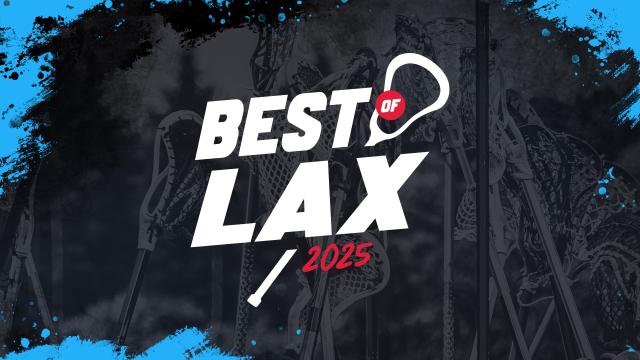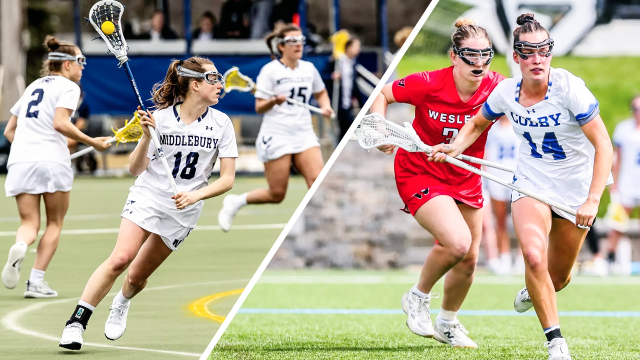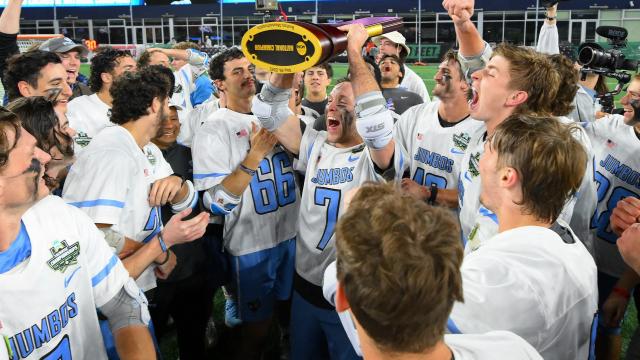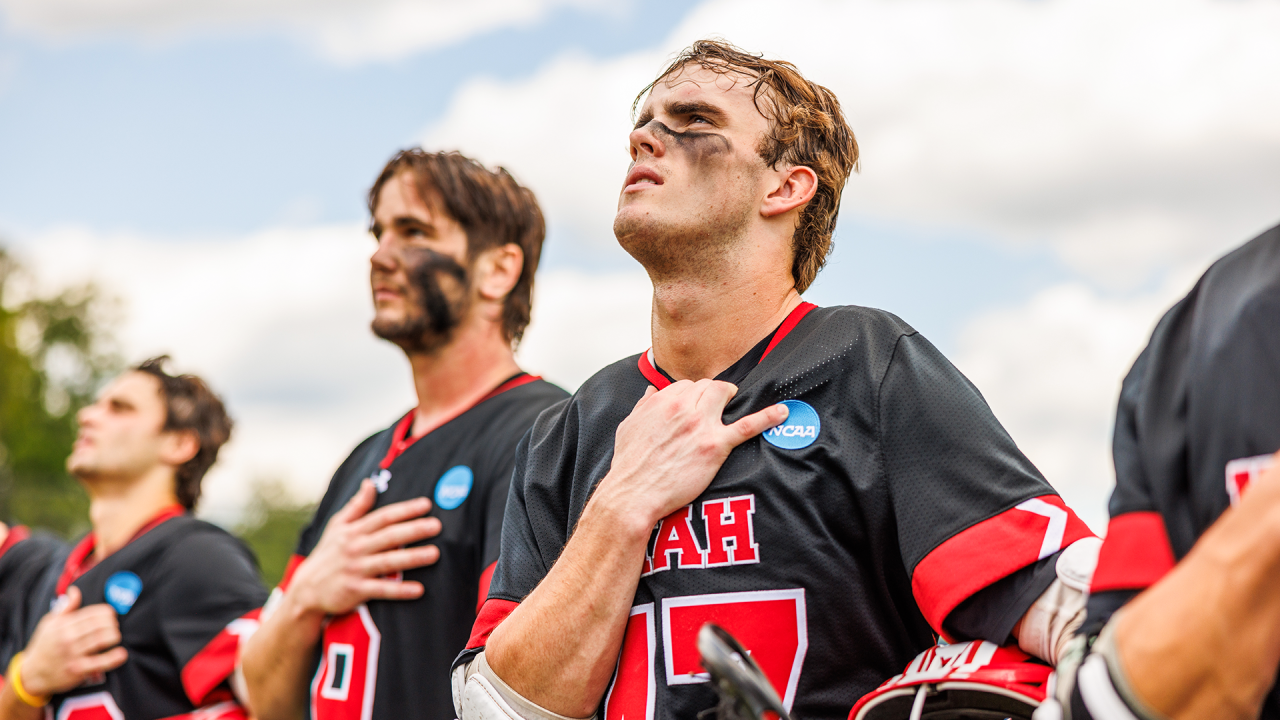
House Rules: What the NCAA Settlement Means for Lacrosse as We Know It
At Dabo Swinney’s first press conference as the Clemson football coach in 2008, he proclaimed his players “better be all in.” The turn of phrase spawned a slogan that became a rallying cry for the school’s rabid fan base.
With the House v. NCAA settlement allowing schools to pay athletes directly and eliminating scholarship limits as of July 1, the Tigers did not just opt into the agreement. They were all in.
And women’s lacrosse stands to gain the most among non-revenue sports.
“The biggest impact would be the increase in scholarships,” Clemson coach Allison Kwolek said.
The Tigers already occupy a $27.5 million lacrosse-only complex built ahead of their first season in 2024. Now the university is poised to invest an additional $1 million annually into the program to sustain 38 scholarships, the new roster cap for women’s lacrosse.
“It’s an investment for us,” Clemson spokesperson Jeff Kallin said. “We want to do that.”
Kallin said the school expects to add about 150 scholarships across all sports. Clemson does not have men’s lacrosse. Football, the school’s largest sport, will move from 85 to 105 scholarships.
“As of now, Clemson plans to fully fund up to the allowable lacrosse scholarship limit,” Kallin said. “Lacrosse may end up as the largest new scholarship investment based on the new roster limits.”
Clemson is open about its support of lacrosse and its other athletics programs under what’s now known simply as the House settlement. Not every Division I program contacted by USA Lacrosse Magazine was as forthcoming with their plans to increase (or decrease) their financial support of the sport, but there is plenty of interest in how each institution plans to handle the new landscape.
“I’m very interested in what other programs are doing, but I don’t trust anybody to be honest about what they’re doing right now, if you want to know the truth,” said Kevin Corrigan, the two-time NCAA champion head coach of Notre Dame men’s lacrosse. “Anybody that has a good situation where they actually have an advantage doesn’t want to share that.”
The House settlement enables former Division I student-athletes to be compensated out of a multi-billion-dollar pool, allows schools for the first time to directly pay athletes as part of a revenue sharing agreement, sets up a new system to approve name, image and likeness (NIL) deals and sets roster limits while opening up more scholarship opportunities.
“I would be lying if I said it’s going to impact us in a in a particular way without knowing exactly how roster caps, revenue sharing, unlimited scholarships are all going to play out,” Penn State men’s lacrosse coach Jeff Tambroni said. “And I really do believe that everyone’s going to be just a little bit different. Every one of us would be lying if we said we knew exactly how it was going to play itself out over time.”
Under the terms of the settlement, all Division I schools are required to pay back damages and vet all future NIL deals through an NCAA clearinghouse, but they have a choice whether to opt into the agreement to trigger revenue sharing and roster limits.
NCAA schools had a deadline of June 30 to indicate whether they intended to opt into the settlement for the 2025-26 academic year.
Most of the uncertainty centers on which sports will be best supported and how schools will finance new student-athlete incentives.
“There’s a lot of great opportunity out here right now,” North Carolina women’s lacrosse coach Jenny Levy said. “If you’re at a place that's really supporting you, that’s awesome. But we also have to be aware of what’s happening to the people that aren’t getting supported, because that’s part of our strength in numbers.”
Over the last year, USA Lacrosse Magazine has interviewed more than 20 people — including coaches, administrators, compliance officers and legal scholars — about the House settlement.
Here’s what we know.
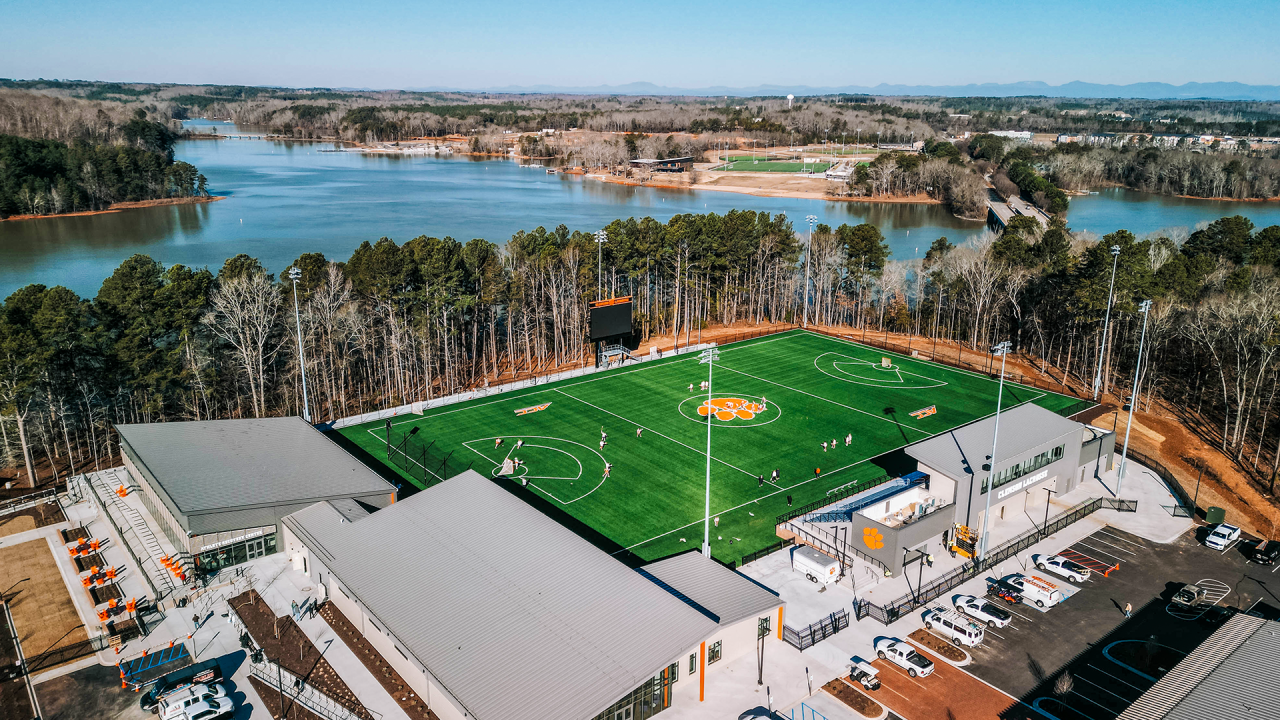
WHAT IT MEANS
The House settlement was approved by U.S. Judge Claudia Wilken on June 6, and it brings significant changes to college athletics by addressing three antitrust lawsuits brought against the NCAA.
Under House, the NCAA and major conferences will send $2.78 billion in backpay over the next 10 years to former college athletes who competed between June 2016 and September 2024, but were denied NIL earnings. Think players like Sam Apuzzo, Matt Rambo, Izzy Scane and Pat Spencer.
Schools now can begin directly compensating their student-athletes through revenue sharing, with that compensation pool capped at around $20.5 million in 2025-2026. The pool is set to increase 4 percent annually for the next 10 years. It’s designed to help schools pay student-athletes for revenue they help generate and dissuade the pay-for-play NIL deals through collectives that had become commonplace since 2021.
NIL deals aren’t going away, but there’s a new process designed to legitimize them. Student-athletes must create an account and report every deal valued at more than $600 to the new online platform, NIL Go, set up by accounting firm Deloitte.
Each deal’s “fair market value” will be vetted and any deal not cleared can be modified or canceled, or a student-athlete can request neutral arbitration. Keeping an uncleared deal could affect eligibility.
A new entity, the College Sports Commission, is charged with monitoring and enforcing compliance in revenue sharing, NIL deals and roster limits.
LIMITED ROSTERS, UNLIMITED SCHOLARSHIPS
Roster limits are a key piece of the settlement. Previously, sports had unlimited rosters but limited scholarships. The settlement sets roster limits for each sport with the ability to offer a scholarship to every student-athlete on a team. Women’s lacrosse will be 38; men’s lacrosse 48.
One of the final provisions that held up the settlement gives schools the ability to retain rostered players or incoming 2025-2026 freshmen that would put them over the roster limit over the next four years. Players who would have been cut under the new roster limits had to be identified “in good faith” as Designated Student-Athletes (DSA) by July 6.
The DSA distinction is a one-time opportunity for each school but remains with student-athletes throughout their career, whether they remain at the school or transfer. Transfer DSAs do not count against their new school’s roster limit.
WHO’S IN AND WHO’S OUT
Schools must decide annually to opt in or out of the settlement to trigger the options.
“There’s just so much concern financially with making sure that the athletic departments are healthy and can compete,” Northwestern women’s lacrosse coach Kelly Amonte Hiller said.
Part of the backdrop behind that decision is that all Division I member schools are already losing funds as part of the $2.78 billion backpay to former student-athletes. The NCAA will bear some of the financial burden, but schools will also see a reduction from payouts like March Madness and conference deals.
“As an athletic department, you’ve got your portion of the backpay settlement for 10 years, so you’re losing money that you would normally bring in from the conference,” Saint Joseph’s men’s lacrosse coach Taylor Wray said.
The Ivy League and Patriot League have opted out as conferences. The Ivy League has never had athletic scholarships but schools do offer generous financial aid packages based on merit and need.
“From an Ivy League standpoint, we feel very comfortable because we haven’t changed and we’ve continued to operate in the same landscape that we always have,” said Dartmouth men’s lacrosse coach Sean Kirwan, adding, “With everything changing, it’s kind of nice to be a group that doesn’t have to change.”
By not opting in, their teams won’t have roster limits and their schools won’t be paying student-athletes. Army and Navy (Patriot League) have always been tuition-free because of their military commitments.
“The Patriot League has had discrepancies. Fully funded, not fully funded and the military academies — we’ve always had that,” Holy Cross women’s lacrosse coach Amanda Belichick said. “That’s one of the things that’s unique about our conference. Maybe what you start to see in other conferences is a little bit more of that.”
We know Clemson is all in. Boston College, Denver, Florida, North Carolina, Penn State and South Florida were schools mentioned by multiple coaches as aggressively increasing their support for women’s lacrosse in the wake of the new rules.
“Carolina is going to be very, very competitive in this new market,” Levy said. “I’m not worried about us. But I do worry about the sport. It doesn’t help us if 50 percent of the ACC schools don’t match that commitment.”
“One of the reasons I am at Penn State is that they’re all in and they’re going to fully support the women’s lacrosse program,” said Kayla Treanor, who recently left Syracuse to become the head coach in Happy Valley.
Schools that opt into the settlement can pay their student-athletes out of the $20.5 million pool cap, but they don’t have to. It’s up to them how they share the revenue between their sports.
“It’s great that we can pay the players and that they can make an income on top of their scholarship,” Treanor said. “When NIL first came out for women’s lacrosse, it was really to help them pay for their scholarship because we only had 12. Now that number is increasing for a lot of schools. Now this money can go into the players’ pockets.”
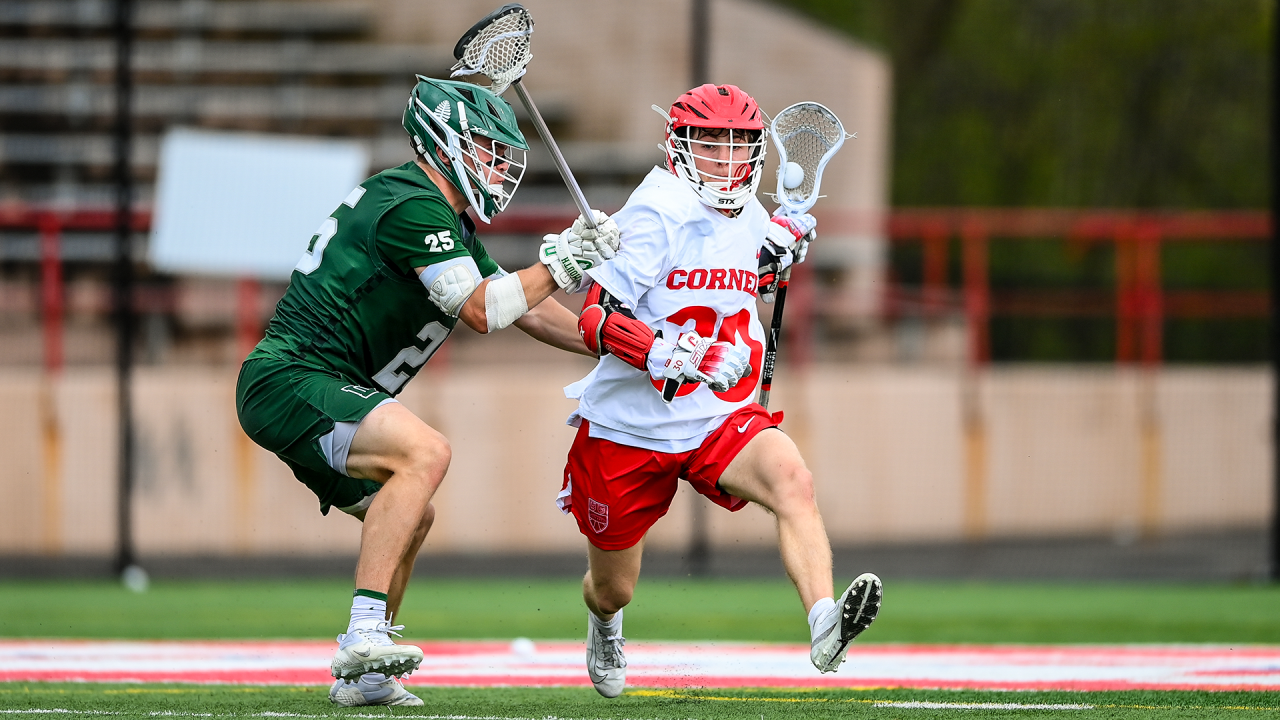
FOLLOW THE MONEY
Most of the revenue share will go to football and basketball. According to projections, only about 5 percent of the payout and future earning opportunities will go to Olympic and non-revenue sports like lacrosse.
“From a revenue share standpoint, it’s going to go to football and both basketball teams,” Duke women’s lacrosse coach Kerstin Kimel said. “I don’t think right now you’re going to see any of our Olympic sports be part of the revenue share piece.”
“Maybe we’re going to have what has always been called tiering,” Virginia men’s lacrosse coach Lars Tiffany said. “Maybe that will become more prevalent as athletic departments have a finite amount of money, but they can now choose to redirect those resources toward areas that they choose are more critical or more relevant to them.”
At Denver, there’s no football program with which to share funds. Johns Hopkins and Hobart are Division III in most sports, and each has only about 80-90 student-athletes at the Division I level between their lacrosse teams. (Hopkins also has Division I fencing.)
Those schools’ unique situations could help their lacrosse programs.
“We’ve been really lucky in not having football that we've always been a priority,” Denver women’s lacrosse coach Liza Kelly said. “That will continue to be the case. You’re going to see ice hockey, gymnastics and men’s and women’s lacrosse really continue to be a priority.”
Football and basketball are also big money makers for schools. That plays directly into the biggest piece of opting in, which is being able to raise money toward the $20.5 million in revenue sharing.
“I’m not quite sure how a school is all of a sudden going to have enough money to pay over $20 million to the athletes and then add a bunch of scholarships,” Corrigan said. “It begs the question, why weren’t you spending all that money before?”
Clemson plans to raise money through new student activity funds, the initiation of alcohol sales and sponsorship and most significantly their settlement with the ACC that redistributes revenue for football and basketball based on television viewership.
A press release from March 4 noted: “The new viewership pool and enhanced success initiatives provide Clemson with the opportunity to earn an additional projected $120 million over the next six years — plus additional revenues for College Football Playoff participation.”
Another attractive option can be tax-deductible donations made directly to a school that could be used for the pool cap. NIL collectives are not tax deductible.
Kentucky, which does not have lacrosse, converted its athletic department to a limited liability holding company, Champions Blue LLC, to create more revenue for the school.
Maryland is waiting for more clarity on its House settlement strategy when new athletic director Jim Smith begins July 15, but he’s on the record stating he’ll focus on raising revenue.
“Everybody is going to be trying to find new revenue streams across the board,” said Cathy Reese, the Terps’ five-time NCAA championship-winning women’s lacrosse coach. “It’s hard to imagine this being sustainable at $20 million. And then it’s going to increase every year.”

TITLE IX AND RECRUITING
Are scholarships increasing, decreasing or remaining the same at most schools?
Remember, the House settlement effectively replaced scholarship limits (12.6 for men’s lacrosse and 12 for women’s lacrosse) with roster caps (48 and 38, respectively).
Of the $20.5 million, $2.5 million is permitted to be used toward new scholarships, one avenue that schools like Virginia are expected to use to increase opportunities. North Carolina hopes to sustain 38 scholarships on the women’s side.
“I always felt like we just never had that opportunity to reward our athletes the same way that other sports were rewarding their athletes,” Levy said. “That’s a positive change.”
Women’s lacrosse in particular stands to gain from the agreement. Schools must meet Title IX rules for equitable allotment of scholarships, and with football teams allowed to increase by 20 scholarships, that opens the door for a matching increase in women’s scholarships.
“Our scholarships are increasing at Penn State,” said Treanor, adding, “We're not at 38, but we're being supported really well.”
Men’s lacrosse scholarships, however, will be at a premium. Some schools could even reduce their support. Others could go big, especially small private institutions not beholden to football or those with the fundraising might to endow additional scholarships.
As Tiffany points out, even a small increase or decrease in a team’s allotment can make a difference.
“I hear that places are adding two more or they'll have more flexibility,” Wray said. “Like if they’re in a recruiting battle and they need another one to try and yield the top player, that they'll have flexibility.”
Schools must firm up what their lacrosse coaches can offer come Sept. 1, when they can start recruiting high school juniors. James Madison women’s lacrosse coach Shelley Klaes expects to have more scholarship money to incentivize recruits, but like many of her colleagues is awaiting direction from the administration.
“I’ve never had to talk to my boss so many times before I make an offer or commit to a roster spot,” Klaes said. “There’s so many layers in these decisions. The trickle down and the implications in year one as opposed to year two or three, it’s all very new.
“If it’s a dollar amount, we have to be way more aware of what the prices of things are at JMU, whether it’s the credits or if a person’s a fifth year and they’re in graduate school as opposed to an undergraduate, if they’re on campus, off campus, in a certain dorm. It’s just way more challenging.”
ROSTER RELIEF
Are teams grandfathering rostered players and 2025 recruits as designated student-athletes?
None of the coaches USA Lacrosse Magazine interviewed said that they wouldn’t be able to use the DSA to keep a roster larger than the new limit.
“We had told some kids on the front end, ‘Hey, if I have to cut this thing to 48, you’re going to be someone who will be on the bubble. I want you to be prepared for that,’” Wray said. “And now those kids don't have to be cut.”
Several women’s teams were under the new roster limits, anyway. James Madison, for example, only has 36 lockers and Klaes doesn’t want any players to have to share.
While some programs jettisoned players ahead of the anticipated roster limits, others held on to extra players hoping that amendment to the settlement would pass and it did.
“We have proactively redshirted kids the last few years and so the last thing I would want to do is say, ‘We decided to proactively redshirt you and now we’re not going to have a spot for you down the road,’” Kimel said. “That gives us some relief and some flexibility, which I'm really happy about.”
For programs that didn’t opt into the settlement, not having a roster limit is one advantage. They won’t be bound by the 38- or 48-player limits.
“It gives us the flexibility to take a walk-on or a late recruit if we want to,” Belichick said.
Carolina is going to be very competitive in this new market. I'm not worried about us. But I do worry about the sport.
North Carolina coach Jenny Levy
NIL REFORM
How does the NIL approach change from schools? The NCAA is trying to quell pay-for-play and ensure compensation is legitimate for sponsored student-athletes.
“NIL was never meant to be a vehicle for you to collect money and pay it to the players,” Corrigan said. “That was a bastardization of what the thing was supposed to be in the first place. Now can you put the toothpaste back in the tube completely? I don’t know. But at Notre Dame, that’s the approach we’re taking. We’re saying kids can earn opportunities and we can help them identify and earn those opportunities. But we’re not going to just set up a pay-for-play system.”
“Penn State does a great job trying to connect them with good local community or corporate sponsors that are willing or see value in Penn State lacrosse,” Tambroni said, “to supplement what they already have in scholarship or funding from Penn State.”
NIL deals will be evaluated by NIL Go based on the relationship between the payor and the school, whether it is a valid business purpose in which a good or service is being sold to the public for profit, and whether the compensation falls in line with “similarly situated” student-athletes.
“We’re all very interested to see what Deloitte approves and does not approve in the first couple of months,” Tiffany said. “Like everything, when you’re onboarding with a new company or whatever, those first couple weeks are important.”
“If it’s permissible, you could see us wanting to work to generate ‘NIL revenue’ if we are not at 38 scholarships to try to make up for the fact that we aren’t at 38 scholarships,” Kimel said. “I could see us doing that and I could see other schools doing that down the road to stay competitive.”
NIL Go will be used by all schools, not just those that opt into the settlement.
“I’m under the impression that we’re under the same microscope as anybody else when it comes to these NIL deals going forward,” Kirwan said of Dartmouth.
THE LAW OF THE LAND
How could state legislation affect the landscape? Coaches expressed concern about how parts of the House agreement will hold up after several states passed different laws addressing NIL issues over the last six years.
In April, for example, Arkansas passed the Arkansas Student-Athlete Publicity Rights Act that blocks an Arkansas athlete’s NIL income from state taxation. It helps athletes from that state compete with athletes from neighboring states like Florida, Tennessee and Texas that have no state taxes.
“It’s kind of tricky,” Amonte Hiller said. “State to state, it’s going to create some inequities. It’s important in these situations not to get too hyped up because things change on the dime, so you just can’t get too high or low because you just don't know how things are going to play out.”
The fight is ongoing. Less than two weeks after Judge Wilken’s decision, State Rep. Joe Tate (D-Detroit), a former NFL player, introduced a bill in Michigan that would prevent his state’s colleges and athletic departments from limiting student-athletes from any profits off NIL.
Sen. Tommy Tuberville (R-Ala.), a retired college football coach, has called for federal regulation.
“Who knows what that's going look like on a national scale or if there’s going to be any kind of federal intervention with it?” Kimel said. “He has a pretty interesting, passionate take on the fact that there needs to be some regulation.”
That’s something that the NCAA has been in favor of since at least July 26, 2024, when it issued this statement: “The settlement does not resolve the patchwork of state laws, many of which may conflict with the settlement. These laws will need to be preempted by federal legislation in order for the settlement to be effective.”
There are reports of a proposed contract circulating that asks schools to support the College Sports Commission’s enforcement abilities over state NIL laws.
It begs the question, why weren’t you spending all that money before?
Notre Dame coach Kevin Corrigan
PENDING LITIGATION
Eight female athletes filed an appeal against the settlement June 11 claiming the distribution of $2.8 billion in back damages violates Title IX because female athletes will not receive the same amount as male athletes — and pausing payouts.
“We need to see the NCAA continue to serve both sexes equally. That’s going to be important down the line,” Kelly said. “I don’t see this as an issue at Denver, but it does worry me for a lot of my colleagues at some different schools.”
The appeal came on the heels of a Trump administration decision to rescind the prior administration’s guidance that would have mandated schools to share NIL revenue with male and female athletes equally.
More Title IX lawsuits are expected, especially with football and men’s basketball estimated to receive up to 95 percent of payments from schools.
“Rev share was really put in to equal some of the revenue that was being brought in by those programs,” Levy said. “My program does not bring in revenue. I know it’s disappointing for women, but the men aren’t going to be treated any differently in men’s lacrosse, so I think that’s fair.”
Northwestern feels fortunate that it doesn’t have to share resources with a men’s program. The Wildcats women’s lacrosse team, which has won eight NCAA championships under Amonte Hiller, stands to benefit as the most accomplished spring sport at the school.
“Women’s sports are probably going to benefit if they’re a strong sport at that school,” Amonte Hiller said. “But the biggest setback is we’re not going to see growth in sports. We’re not going to see them adding a men’s lacrosse program or women’s lacrosse program or women’s wrestling program until they can level out financially.”
THE GM MOVEMENT
Are the increasing number of general managers helpful? Northwestern is one of the schools that made headlines by hiring a GM for its athletics department. The school brought on veteran NFL scout and former Wildcats football assistant director of player personnel Christian Sarkisian to fill the role in May.
“It’s kind of cool to have someone like that to bounce off ideas and approaches,” Amonte Hiller said. “He’s helping us calculate things and come up with strategies with the resources that we do have in place.”
With schools looking for ways to trim athletic departments and university staff due to revenue being distributed to athletes, a lot of coaches are skeptical that anyone could be looking to add positions. Others expect the GM to become almost as commonplace as the third assistant and director of operations positions.
“I think it will eventually trickle down,” Tambroni said. “If you’re not at least reaching out to some of these consultants or advisors in either casual conversations or professional conversations, you’re probably missing the boat a little bit about how to manage the next three to five to 10 years as we forecast into a very challenging and unforeseeable future.”
General managers could make coaches’ jobs easier. They could help streamline financial and roster decisions.
“It’s a cool approach,” Levy said. “From the standpoint of a coach — where you’re so busy trying to manage players, manage winning and manage the here and now — to then managing money and managing deals, it’s hard to do all of that and be good at it.”
“It wouldn't concern me if somebody did that,” Corrigan said. “But I’m going to do my own roster management for us the same way we always have with scholarships and so forth.”
HAVES AND HAVE-NOTS
What do coaches expect to be the most significant effect of the House settlement on their programs?
“The biggest impact could be the discrepancy in scholarship support within Division I and even within conferences,” Tiffany said. “While there’s always been a lack of true parity, the new reality is that each institution can decide how it would like to support its athletic teams in terms of scholarships, which will impact lacrosse.”
Over and over, coaches brought up the possibility of a growing gap between the haves and the have-nots. While coaches haven’t been freely sharing their school’s plans with each other, they are paying attention to what’s happening within their athletic department, within their conference and within their sport nationally so they can stay competitive.
“You’re going to find out where you are in the pecking order pretty quickly because I think ADs are going have to kind of tier sports at each school,” Wray said. “You’re going to have football No. 1, basketball No. 2, and then it’s like, ‘What else do we want to try and win national championships in?’”
“It’s hard to predict because everything is changing so rapidly and every day,” Amonte Hiller said. “But my hope is that it puts lacrosse in a good spot overall and we can continue to grow and have resources for our student-athletes.”
Better be all in.
Correction: A previous version of this article incorrectly stated that Patriot League schools do not offer athletic scholarships. The conference changed its rules to allow athletic scholarships in 1998 and many schools do fund them for men's and women's lacrosse. We regret the error.
Justin Feil
Justin Feil grew up in Central PA before lacrosse arrived. He was introduced to the game while covering Bill Tierney and Chris Sailer’s Princeton teams. Feil enjoys writing for several publications, coaching and running and has completed 23 straight Boston Marathons. Feil has contributed to USA Lacrosse Magazine since 2009 and edits the national high school rankings.

Categories
Tags
Related Articles
